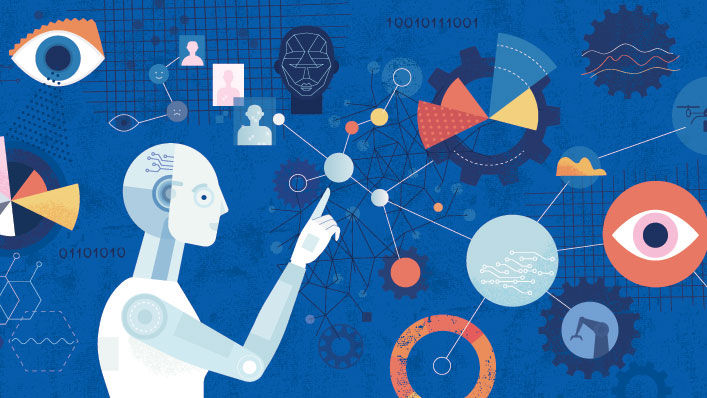Could AI-enabled Retrosynthesis Lead to the Next Big Breakthrough?
We’re betting $1 million to find out!

The Standard Industries Chemical Innovation Challenge: Advancing AI-Assisted Molecular Synthesis is underway. The Challenge from Standard Industries (Grace’s parent company) and Grace will award $1 million to an individual or team that best uses AI to transform the process in which fine chemicals—vital building blocks in products ranging from medicine to food supplements—are made.
The subject of the Challenge is chemical retrosynthesis, the process in which chemists start with a desired molecule and work backward to figure out the best synthetic pathway forward. It’s a time and resource intensive process that today depends on manual analysis and trial and error. The Challenge posits that AI and machine learning (ML) capabilities can streamline and optimize the process for the benefit of humankind.
What is retrosynthesis?
Retrosynthesis is a technique used in organic chemistry to design a synthesis route for a complex molecule by working backwards from the target molecule to simpler starting materials. It’s been compared to solving a maze backwards. A powerful tool, retrosynthesis helps plan efficient and cost-effective synthetic routes for important molecules like drugs, materials, and natural products.
The process involves breaking down the target molecule into smaller, simpler pieces, and then figuring out what reactions and reagents would be needed to combine those pieces back together. The classical approach involves an expert in organic synthesis putting pencil to paper to dissect a molecule into smaller subunits. This can be a very time-consuming exercise as it requires identifying literature references to support the proposed synthetic steps. Also, because the process is manual, it is easy to miss potential solutions – whether due to fatigue or simple human error.
Why AI and ML?
AI-enabled retrosynthesis platforms can be valuable for process development in chemical synthesis. By leveraging machine learning algorithms, these platforms can automatically learn chemistry knowledge from existing experimental datasets and use that knowledge to predict the most likely reactants and synthesis paths for a given molecule.
This automated approach can save chemists and researchers considerable time and effort, as well as reduce the need for manual, rule-based expert systems. Perhaps most important, AI-driven retrosynthesis prediction can help identify new and more efficient synthesis routes that may not have been previously considered.
Teams submitted white papers detailing their computational approaches and proposed datasets and models to enter the SI Challenge. Our judges selected the top ten teams to move on in the contest and propose synthetic routes to create our test molecules. From there, three finalists will advance to the final round, where they’ll tackle challenge molecules with their proposed AI solutions.
One thing that makes retrosynthesis hard is the sheer number of possibilities. Imagine that there are 10 ways to break a target molecule into two smaller starting pieces. Each one of those starting pieces could then be created in 10 different ways, and so on. For only six steps backwards, that would be 10X10X10X10X10X10 = 1,000,000 different ways to make the target molecule!
The human expert can focus in on a few “tree branches” – or possibilities – that seem plausible, and may miss some important, more efficient, or more environmentally sustainable approaches. A computer tool, on the other hand, can look through all these possibilities and select the best one. It’s a problem that is better suited for a computer, but computers currently don’t have the chemical intuition that a good chemist does. We think AI and ML can change that.
Challenge accepted!
Teams submitted white papers detailing their computational approaches and proposed datasets and models to enter the SI Challenge. Our judges selected the top ten teams to move on in the contest and propose synthetic routes to create our test molecules. From there, three finalists will advance to the final round, where they’ll tackle challenge molecules with their proposed AI solutions.
Find out more about the Challenge and visit our insights regularly to stay up-to-date on the competition!